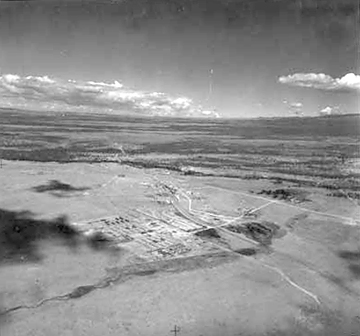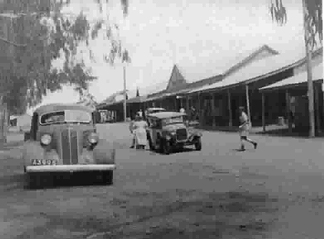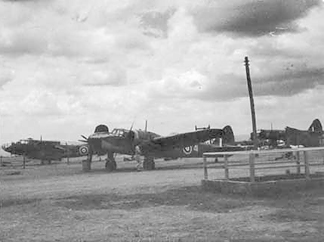 |
 |
||||
|
Flight Lieutenant NAW How 78445 RAFVR 20 June 1911—9 August 2003 Norman Alfred Waldo How was the eldest son of Alfred and Edith How (née Jones), born in London at mid-Summer 1911. The couple were to have five children in all. When he joined the RAFVR in early 1939, How was 28 years old: of quite senior years for aircrew. He trained as an Observer through No 1 Air Observers Navigation School (November 1939 to February 1940) and No 7 Bombing and Gunnery School (February to April 1940). Having qualified for the Observer’s winged 'O' badge, Norman How was commissioned as Pilot Officer in April 1940. The Middle East To 211 Squadron and 72 OTU The pace of flying duties with 211 Squadron was much easier from June to the end of September, with just 16 hours added to the Log. In November, the Squadron was absorbed briefly into 72 OTU as it “stood up”. Then the 7 December 1941 disaster in the Pacific saw the Squadron quickly re-formed, by whipping large parties of experienced ground and aircrew out of the OTU, to re-establish 211 Squadron at Helwan for the urgent move to the Far East. How was one of a number of the 211s who remained with 72 OTU in the Sudan. To Nanyuki By then, 72 OTU was preparing to move and take on a much larger training task. In preparation, there were aircraft to test and to ferry to the new station, at Nanyuki in Kenya. By the beginning of April, 72 OTU was setting up there and How had nearly 440hrs in the Log. Later that month he was promoted Flight Lieutenant.
A nice large-format aerial camera shot of the RAF encampment from the air, from Alan Conrad’s collection of photographs. Nanyuki lies almost exactly on the Equator, on gently sloping temperate woodland country near Mount Kenya—a convenient landmark. The location implies even hours of daylight, while the climate is warm temperate with little variation in daily temperatures and moderate rainfall peaking in April. At an altitude of 6,000ft and thus high but by no means hot, all in all, Nanyuki was a fair site for an airfield and for an OTU with probably weary aircraft. Some 70 miles away, 70 OTU at Nakuru lay at a similar altitude. Both were utterly different in every way to the hot and sandy flats of Wadi Gazouza set at about 3000ft inland of the Red Sea Hills. Taking into account both the considerably higher elevation and the far more moderate prevailing temperatures of Nanyuki, aircraft performance on take-off and on landing was marginally better (according to the current performance tables of the day).
Established as a European settlement in 1907, by 1930 the branch railway from Nairobi had reached the township.
Aircraft under repair at Nanyuki in 1942, photographed by Cpl Alan Conrad of the Orderly Room. The aircraft roster for 72 OTU at this time included Bristol Blenheim Is, IVs and Vs, Douglas Boston IIIs, and Martin Baltimore IIIs and IVs. Here there’s plainly a Boston on the left and a Blenheim IV middle and nearest camera. The third aircraft on the far right, rear, appears to be a Martin Baltimore, perhaps partly dismantled. Flying continued at a relaxed level for How until September 1942. From then until June 1943 there was rather more time in the air, most of it for How in the sedate Ansons: ever reliable, never fast, but with a cabin large enough to be a useful small aerial classroom. Back to ops and Home again Norman How died in August 2003, aged 92 years. His younger brother Douglas James How DFC had been killed in action while serving with 61 Squadron in September 1940. To compile this brief account of his war service I have drawn mostly on his RAF Flying Log Book, for a copy of which I am grateful to the helpful staff of the RAF Museum. An indication of the regard held for Norman How by his family can be readily seen from their Family Genealogy pages. Sources Conrad A Images via John Conrad Air Ministry RAF Flying Training Manual Part I—Landplanes Appendix V (Air Publication 129 Apr 1941)
www.211squadron.org © D Clark & others 1998—2024 |
||||


